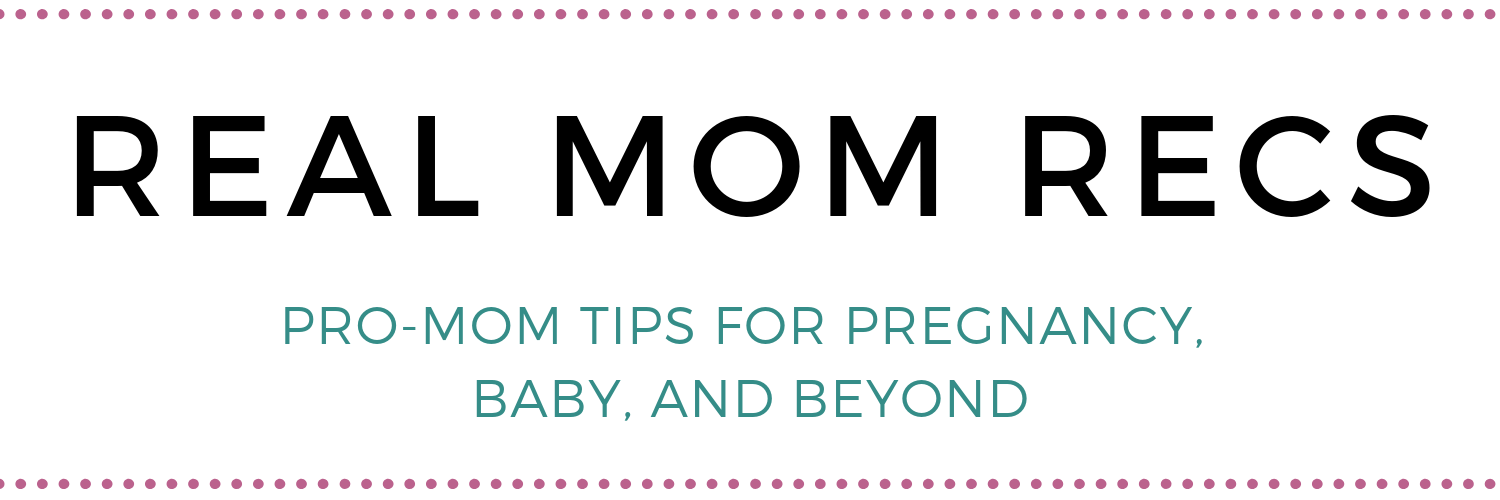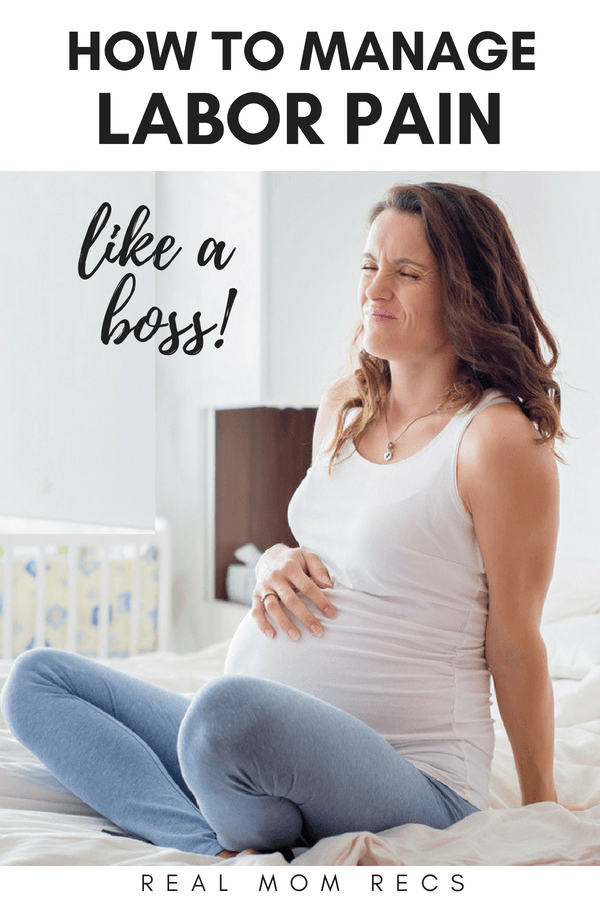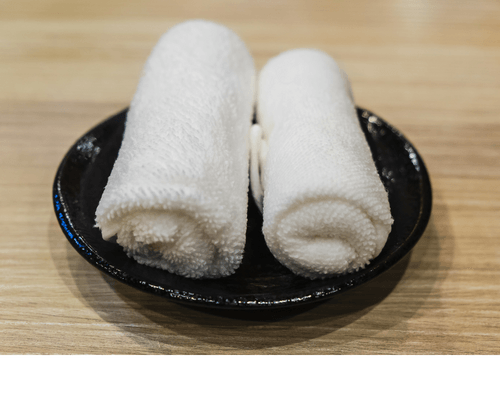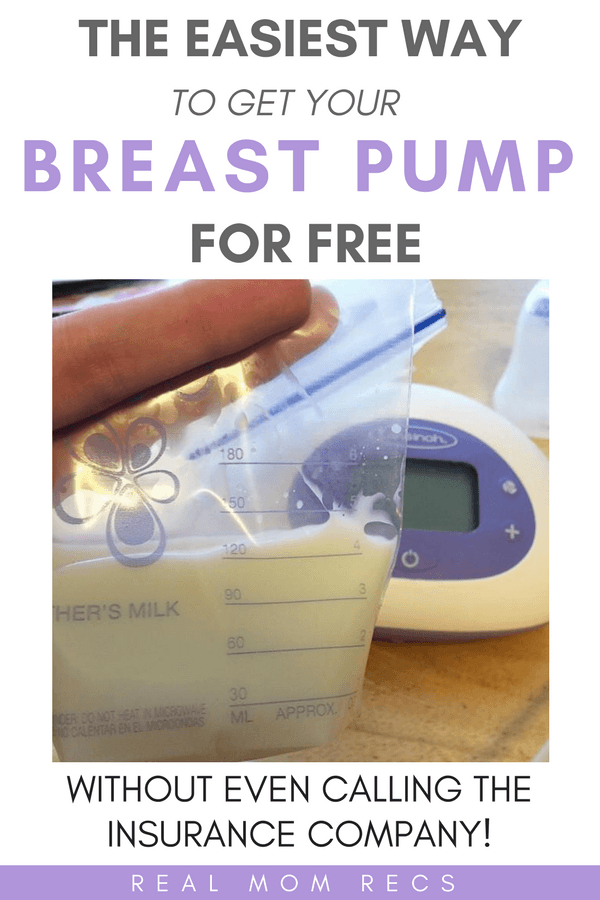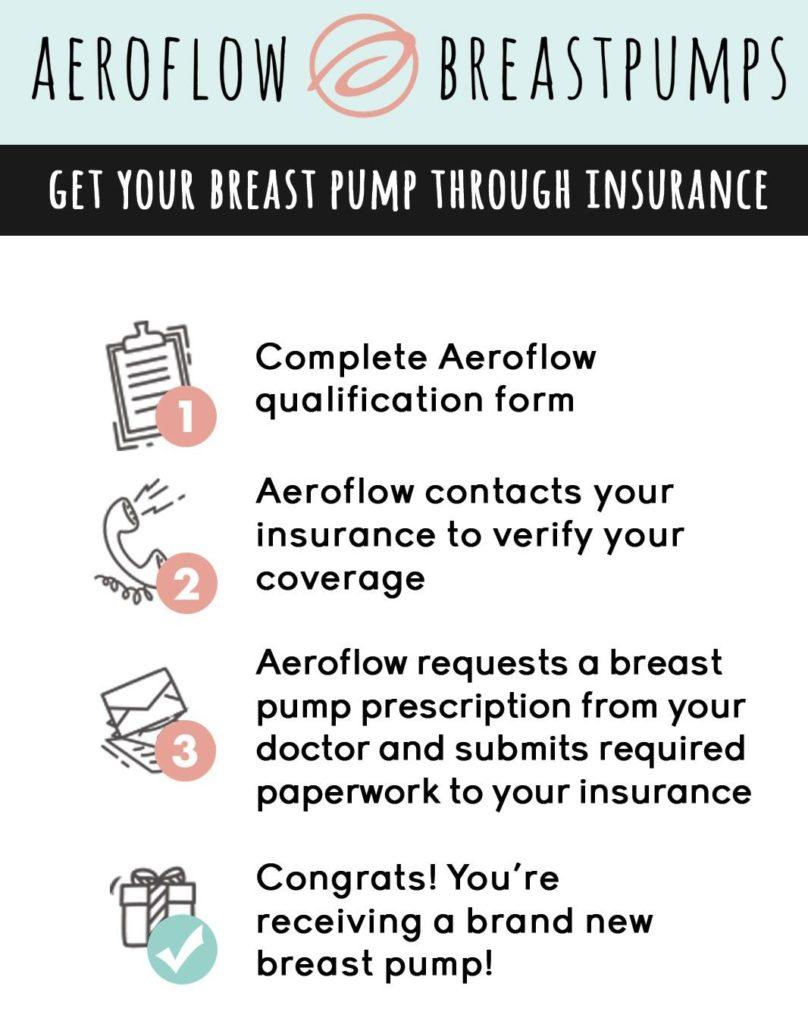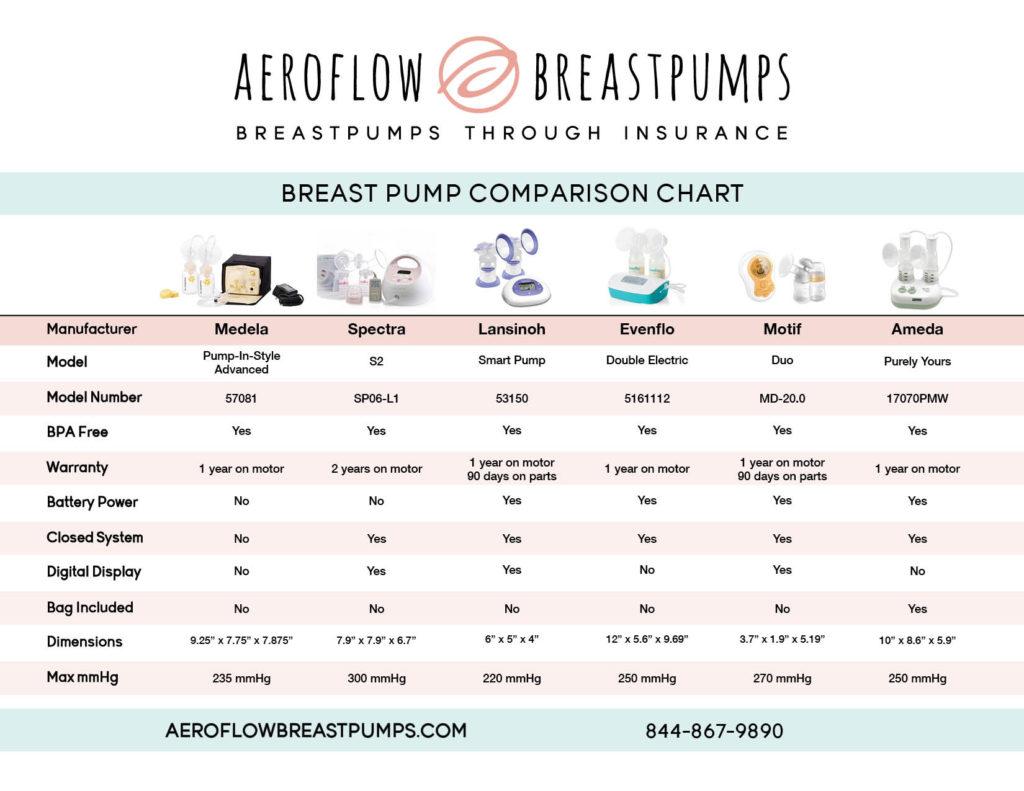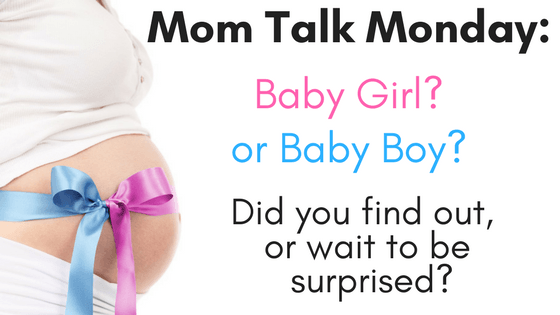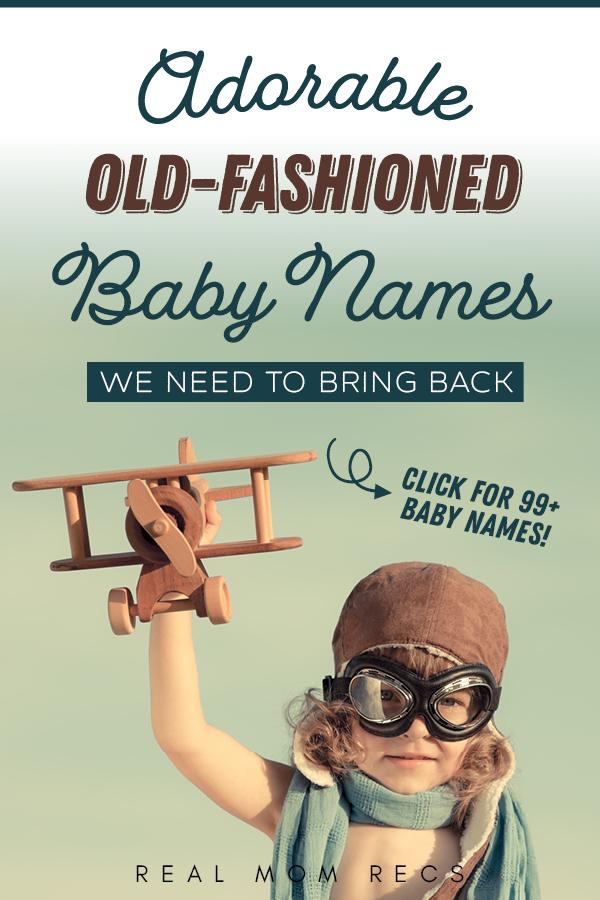Of all the worries first time moms-to-be have about labor and delivery, the pain of childbirth is probably the biggest.
Whether you have your heart set on a drug-free delivery or you just want to delay getting an epidural as long as possible, it’s a good idea to be informed of all your pain management options. It’s just about unheard of to have a pain-free delivery, so every pregnant woman should have an arsenal of tools at the ready to help with the pain of labor.
If you are wondering what the best options are for managing labor pain, read on for a comprehensive list of techniques. You will also hear from experienced moms answering the question “what helped you get through labor?”
Disclosure: This post may contain affiliate links, which means if you click one of the product links, I receive a small commission at no extra cost to you.
Use Music
Many women have found that making a labor playlist to listen to when you’re in labor helps to distract from the pain. This is especially the case when used with headphones, so you can silently retreat into your own little world.
“I don’t know what I would have done without my labor playlist and headphones! This helped to keep me relaxed and focused on something else. Also, a hot shower helped tremendously.” -Inez, For The Love Of Mom
“When I was in labor, I had a specific song to focus on and keep me grounded. I would sing it in my head over and over again. This helped distract me for the most part, but when the pain was really rough, i did kegels!” -Melissa, sheis.com
“Prior to my epidural, music. It had to be through headphones, though. Listening to music that way has always helped me block out everything around me.” -Desteny, A Frugal Desteny
Birth ball
Most maternity wards come equipped with birth balls, which are just regular yoga balls used during labor. Chances are if you have one at home you’ve already been enjoying it during pregnancy, as sitting on it helps take away some of the pressure on your back.
During pregnancy I also loved sitting on it with my legs out wide and swiveling my hips in a circular motion. This action not only feels good on your back and hips, it can also help the baby move down more and get into optimal position for birth.
Jessi, aka The Coffee Mom, tried a little of everything, including the birth ball:
“I had terrible back labor. The only thing that helped at all was getting on all fours and rolling on my yoga ball. Getting into a hot bath helped as well, for a little while. No lie though, I got the epidural after 5 CM.”
Julie (Fab Working Mom Life) describes how the ball and massage helped during early labor:
“I used the exercise ball for a while, rolling around sitting on it. I had back massages and the tennis balls in a sock trick helped at first. After a while, Pitocin got too intense.”
Hypnobirthing
Hypnobirthing is a popular technique based on mindfulness, breathing, and relaxation. The theory is that you need to counter the urge to panic, because that creates adrenaline which pumps blood faster throughout the body as it prepares to fight-or-flight. When you remain calm, the blood is pumped to the uterus where it can do its job of helping the baby move down.
Amy (Mum of the Tribe) says, “I hypnobirthed my second baby drug free- it works but it takes practice. The practice alone is worth it as it allows you go into deep relaxation and really connect with your baby while you’re pregnant.”
The book Amy used as her guide is HypnoBirthing, The natural approach to safer, easier, more comfortable birthing – The Mongan Method.
Aubree of A Mother’s Field Guide writes, “I used the Hypnobabies program, which helped me to relax and focus during my labor. Not only that though, I did a lot of prep work before labor ever started. ”
I think all mothers can agree, being prepared for birth is critical. If you don’t have a comprehensive prenatal class available to you through your hospital or birthing center, here is my favorite online birth class:
Counter-pressure and massage
During my 22 hours of labor with my first, the only thing that helped take away some of the pain was counter-pressure. We had learned this technique during birth class and I’m so thankful that we did.
With each contraction, the pain wrapped all the way around lower belly and into my back. When I’d feel a contraction starting, I would lean over the side of the bed and have my husband press his fists as hard as he could into my lower back on either side of my spine. This helped take away at least half of the pain! It helped so much that when he needed to use the bathroom I made him run in between contractions so I wouldn’t have to endure even one without his counter-pressure.
Stormy (Pregnant Mama Baby Life) also enjoyed her husband’s counter-pressure as well as laboring in the tub:
“I labored for a long time with my first. The two things that helped me most were getting into a warm tub of water and having my husband push really hard on my hips during contractions. These two things help so much! Made the pain much more tolerable.”
Anna (Abrazo and Coze) enlisted the help of a Doula to get her through the pain. One of her techniques included counter-pressure as well:
“With my last birth, my Doula was the biggest factor in dealing with 12 hours of labour pain effectively. She played a fun game with Mr. A and I as distraction. Later on, she applied pressure on my back during contractions, which made the pain manageable, despite being on a full dose of pitocin (known for making contractions more painful and intense than without).”
Let water work its magic
Laboring in the tub or with a shower head aimed at your back are both great ways to take some of the pressure off the contractions. Warm water is also a known pain reliever as it helps your body produce endorphins and promotes relaxation.
“When I was giving birth to my son getting in a warm bath helped with contractions so much! If your hospital has a tub I highly recommend giving it a try!” Kayla, Parenting Expert to Mom
Jennifer of Modlins Multiply simply says “Being in the water was a total game changer for me.”
Bella describes how she used the tub in conjunction with hypnobirthing:
“When I was in labour I slept in the bath until my body started pushing. It was so relaxing and peaceful. I had done hypnobirthing so that helped massively.” Documenting the Drews
Heather (Fearless Faithful Mom) confirms the pain relieving power of water:
“Water helped me! With one kid it was the running shower on my belly and with another sitting in a tub of hot water.”
Farrah says, “Warm water was instant pain relief for me. I loved to have the bath filled and have the shower running on me at the same time. (I had home births for my last two).” New And Natural Mom
Practice relaxation
Contractions feel like an involuntary tensing and tightening of the abdomen. Most people’s reaction to the feeling of contractions is to tighten and tense up the rest of their body. Making a conscious effort to keep your muscles relaxed can actually help you deal with the pain. Think about keeping your body calm while letting the contraction wash over you like a wave.
Susannah of Simple Moments Stick writes, “Labor is all about relaxing for me. Consciously letting all your muscles go limp and focusing on that, not the pain, is a game changer!”
Do what you can to promote a sense of calm in the room. Dimming the lights, keeping it quiet, and relaxing music can help you feel at peace.
Michelle writes, “Essential oils and fake candles played a part in keeping me calm throughout the fifteen hours.”
Heat or cold
I used both heat and cold during my labor to help cope with the pain.
During early labor, I used my rice sock. This is a tube sock filled with rice that you can microwave to turn into a long flexible heating pad. It felt comforting around my neck and shoulders, and later under my back.
Aileen also found heat to be helpful as one of her pain management techniques:
“I had a doula who used a warm towel and essential oils around my neck. Counter pressure on my hips was the best until I hit transition. This was my third birth and a VBAC.” AileenCooks.com
As labor progressed and became more intense, it is normal to feel overheated. This is when I started favoring cold- especially washcloths soaked in a bucket of icy water. I put these on my forehead, the back of my neck, even my belly when it started to feel hot.
Ice also helped me from throwing up when I started feeling nauseated during transition.
Michelle of Bottles n Bellinis lists cold as one of the three things that helped her during her natural childbirth. She also illustrates why all pregnant women should have a backup plan for pain management, because sometimes an epidural isn’t an option even when you wanted one!
“Three things helped me during my natural drug free (not by choice) labor: 1) my nurse running her cold finger tips along the lines of my hands to deflect from the pain; 2) my midwife pushing on my lowering back during the peaks of my contractions; and 3) concentrating on breathing in and out! I was not prepared to labor without the assistance of an epidural, however, the anesthesiologists did not feel I was a candidate due to a rare blood condition that I have.”
TENS machine
A TENS (transcutaneous electrical nerve stimulation) unit is a handheld device that uses electrodes that stick to your back to transmit electric stimulation to your nerves. It doesn’t affect the sensation of the contractions directly, rather it interrupts the pain signal on its way from the nerves to the brain. In other words, the pain is still there, but you are not interpreting it the same way.
TENS is a low-risk pain management technique used in all kinds of different therapies and by chronic pain sufferers. It is largely unknown in the U.S. but is frequently used in Europe and Canada.
Susana of pregged.com says:
“I had back labour and the thing that helped most was my TENS machine. You need to put it on early though, when regular contractions start. After having it on for 5 or 6 hours the amount of endorphins I was producing due to the TENS made the whole thing far less painful than my other births. In fact I’d go so far to say I was in a state of bliss. It was a truly magical experience.”
Focal object
A focal object is anything you use to focus on during labor that directs your attention to something positive. It can be a photograph, a mantra, a song, or even a thought.
Focusing on holding your baby can help keep the pain in perspective as you realize it’s all moving you towards a positive outcome.
Amy (Daily Successful Living) used lots of pain management techniques including this focal thought:
Giving birth is tough! I don’t have one specific thing that helped me but had a lot of little things the helped distract me. I had a great playlist of inspirational songs, I walked around as much as possible, I almost broke my husbands hand squeezing and most importantly I meditated and focused on a positive outcome and being able to hold my baby for the first time.
Capricon (Dream Big Blog Hard) used a mom and baby focal picture:
My first one was cesarian, and because of that on my second birth I was stuck in bed with the monitor. I didn’t have the luxury of walk or warm bath and the labor lasted for 10 hours. The one thing that helped me was a focus on the picture on the wall. It was of a mother holding her baby. I keep telling myself that I will hold my baby soon.
Ashley from 5 Kids and a Bunny says:
Find something to stare at and just stare and breathe through contractions. I had them put on a stupid show I didn’t like just to have something to concentrate on.
Move around
When you’re laboring naturally, take advantage of the fact that you are not confined to a bed. This freedom to be up and about means you can look for whatever position is most comfortable for you in the moment. Walking around also helps speed up labor and bring baby down.
Tavia of Big Brave Nomad did lots of moving and changing positions during labor:
“I labored mostly standing next to the bed swaying my hips, then when I went into transition I moved onto the bed and labored on all fours with my arms draped over the back of the bed. I would blow raspberries with my mouth through contractions. I freaking love giving birth — hands down the best part of the pregnancy experience.”
Throw manners out the window
When you’re in the midst of physical agony, do whatever it takes to get through the moment. Go ahead and rip your gown off if it bothers you, squeeze your husband’s hand until he screams, or curse like a sailor. Your labor and delivery providers have seen it all before!
Ashley’s advice is, “Ignore everyone. If I didn’t feel like speaking or responding, I didn’t. Manners don’t matter right now.”
Alaina-Lee, www.momeh.ca, says: “I screamed profanity at my husband and doctors … that seemed to help a lot.”
Epidural
Some women are superhuman and make it through all of labor and delivery without the help of pain medication. But for many women, they reach a point where the pain either becomes too intense, or labor goes on so long that they are too exhausted to keep doing what they’re doing. Getting an epidural can allow you some much needed pain relief as well as rest.
Even if your goal in life was to birth a child completely drug-free, you should never feel like a failure if you end up getting an epidural. Delivering a child is an amazing feat no matter how it’s done!
If you’re curious about what it feels like to get an epidural, I answered that and any more questions in All Your (Not So) Stupid Birth Questions: Answered!
It’s also a good idea to have a general idea of what a C-section entails, just in case you unexpectedly end up needing one, which happened to the guest poster of 15 Things You Need to Know About Having A C-Section.
